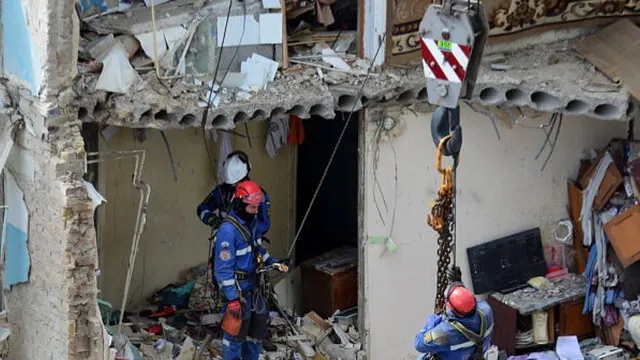
Ukraine discovers sophisticated drones with Iranian technology in wreckage
2025-06-25 05:57- Ukrainian drone hunters discovered advanced drone debris featuring sophisticated technology.
- These drones display innovations likely influenced by Iranian technology and new operational tactics.
- The influx of advanced drones raises concerns over future Iranian technological support for Russia.
Express your sentiment!
Insights
In Ukraine, Ukrainian drone hunters have recently discovered drone debris amid the wreckage left by Russia's nightly assaults on Ukrainian cities. These drones, unlike the typical Russian models, show signs of advanced technology believed to originate from Iran. Equipped with sophisticated cameras, artificial intelligence-powered computing systems, and a radio link for remote operation, the drones highlight a concerning trend in military capabilities that has developed over the past months. Ukrainian officials noted that over the last few months, a variety of drones have been identified, each featuring eight to twelve antennas and showcasing numerous advancements. The Ministry of Defense speculated that these new models may be tied to an operation to create decoys that aim to overwhelm Ukrainian air defenses. It has become apparent that the majority of recent drone technology utilized by Russia is now produced within the country, even though much of the foundational design was initially based on Iranian models. This shift suggests that Russia has continued to innovate its tactics and strategies, utilizing drones to target Ukrainian defenses effectively. In analyzing the surge in drone use, experts have pointed out Russia's change in operational tactics. They have begun deploying these drones at varying altitudes to evade Ukrainian anti-air systems, emphasizing the sophistication of military operations. The newly discovered drones are thought to be part of a broader strategy dubbed Operation False Target, aiming to exhaust Ukrainian resources through mass deployment. On some nights, nearly half of the drones launched have managed to penetrate Ukrainian defenses, a statistic that underscores the evolving complexity of this conflict. However, the ongoing situation remains precarious, particularly regarding the future provision of military equipment from Iran to Russia. The UK's Defense Ministry now suggests that escalating Israeli military actions against Iranian interests could hinder the supply of advanced drone technology to Russia, therefore impacting their ongoing campaign. As much of the technology necessary for drone production has been transferred to Russia, experts have stated that while the short-term effects might be limited, the long-term outlook could shift with potential supply chain disruptions. In conclusion, the recent findings of advanced drones in Ukraine point toward a significant development in warfare tactics influenced by Iranian technology. With Russia continuing to refine its military strategies and technology, the landscape of conflict is poised for further changes as external dynamics involving Iran and Israel unfold in the coming months.
Contexts
The impact of Iranian technology on Russian military operations is multifaceted and increasingly significant, reflecting the evolving geopolitical landscape. Over the past few years, the collaboration between Iran and Russia has deepened, particularly in defense sectors, where Iranian advancements in various technologies, including drones and missile systems, have found applications in Russian military strategies. This partnership has enabled Russia to bolster its military capabilities through the adoption of Iranian designs and concepts, which are often touted for their cost-effectiveness and innovative approach to combat scenarios. The transfer of technology and expertise has especially been prominent in areas such as UAV (unmanned aerial vehicle) warfare, which has become a core component of contemporary military operations. The integration of Iranian drone technologies has aided Russia in its strategic operations, allowing for enhanced reconnaissance, surveillance, and targeted strikes, thereby expanding the effectiveness and reach of Russian forces in conflict zones. The use of these technologies not only increases operational efficiency but also provides Russia with a competitive edge against adversaries, adapting to the current demands of modern warfare. Moreover, the Iranian influence is not limited to drones; it has also extended to missile technologies, where Iranian designs are being analyzed and utilized to upgrade Russian systems or develop new variants that complement existing arsenals. This technological symbiosis manifests as a mutually beneficial arrangement, enabling both nations to achieve strategic objectives that align with their military doctrines. However, the impact of Iranian technology on Russian military operations raises concerns among international observers, particularly regarding the potential escalation of conflicts in regions where both countries exert influence. The proliferation of sophisticated military capabilities could exacerbate tensions and lead to an arms race, prompting calls for enhanced diplomatic efforts to mitigate risks. While the collaboration signifies a robust alliance between Iran and Russia, it simultaneously poses challenges for global security, underlining the need for ongoing scrutiny of their military advancements and the broader implications for international stability.